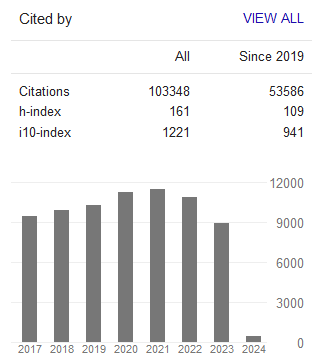Microeconometric Analysis of the Determinants of Savings Bahaviour in Zimbabwe: 2009-2012
- Chikokol Laurine
- Pierre Roux
- Dzingirai Canicio
Abstract
A high savings culture is a foundation of a sustainable national social, sound financial and economic policy. The
main objective of this paper was to gain insights on savings behaviour by individuals in Zimbabwe after the
adoption of the multiple currency exchange rate system. A micro econometric approach which took into account
of individual heterogeneity was adopted. The selected individual characteristics inputted in the logit model as
savings predictors were age, marital status, religion, education, position in the household, household size, type of
accommodation, place of accommodation, employment status, income, number of people employed in the
household, and expenditure per month. The goal was to understand which variables authorities and commercial
banks might need to target in order to promote a savings culture in Zimbabwe after most people lost their savings
in the banks due to hyperinflation. Secondly, we investigated within a sample of savers what determined the
number of times individuals would deposit money in the bank by use of Poisson regression model. Finally, we
came up with a savings predicting model which helps banks identify targeted customers based on the individual
characteristics. The results revealed that majority of the variables were significant as predictors to savings.
However, income level proved to be the most significant variable as it had the least probability value. To
promote a saving culture, banks in Zimbabwe may need to consider bringing in differentiated and tailor made
products for the high net worth and the mass market.
- Full Text:
 PDF
PDF
- DOI:10.5539/ijbm.v8n10p159
Journal Metrics
Google-based Impact Factor (2023): 0.86
h-index(2023): 152
i10-index(2023): 1168

Index
- Academic Journals Database
- AIDEA list (Italian Academy of Business Administration)
- ANVUR (Italian National Agency for the Evaluation of Universities and Research Institutes)
- Berkeley Library
- CNKI Scholar
- COPAC
- EBSCOhost
- Electronic Journals Library
- Elektronische Zeitschriftenbibliothek (EZB)
- EuroPub Database
- Excellence in Research for Australia (ERA)
- Genamics JournalSeek
- GETIT@YALE (Yale University Library)
- IBZ Online
- JournalTOCs
- Library and Archives Canada
- LOCKSS
- MIAR
- National Library of Australia
- Norwegian Centre for Research Data (NSD)
- PKP Open Archives Harvester
- Publons
- Qualis/CAPES
- RePEc
- ROAD
- Scilit
- SHERPA/RoMEO
- Standard Periodical Directory
- Universe Digital Library
- UoS Library
- WorldCat
- ZBW-German National Library of Economics
Contact
- Stephen LeeEditorial Assistant
- ijbm@ccsenet.org
